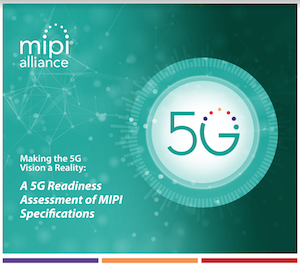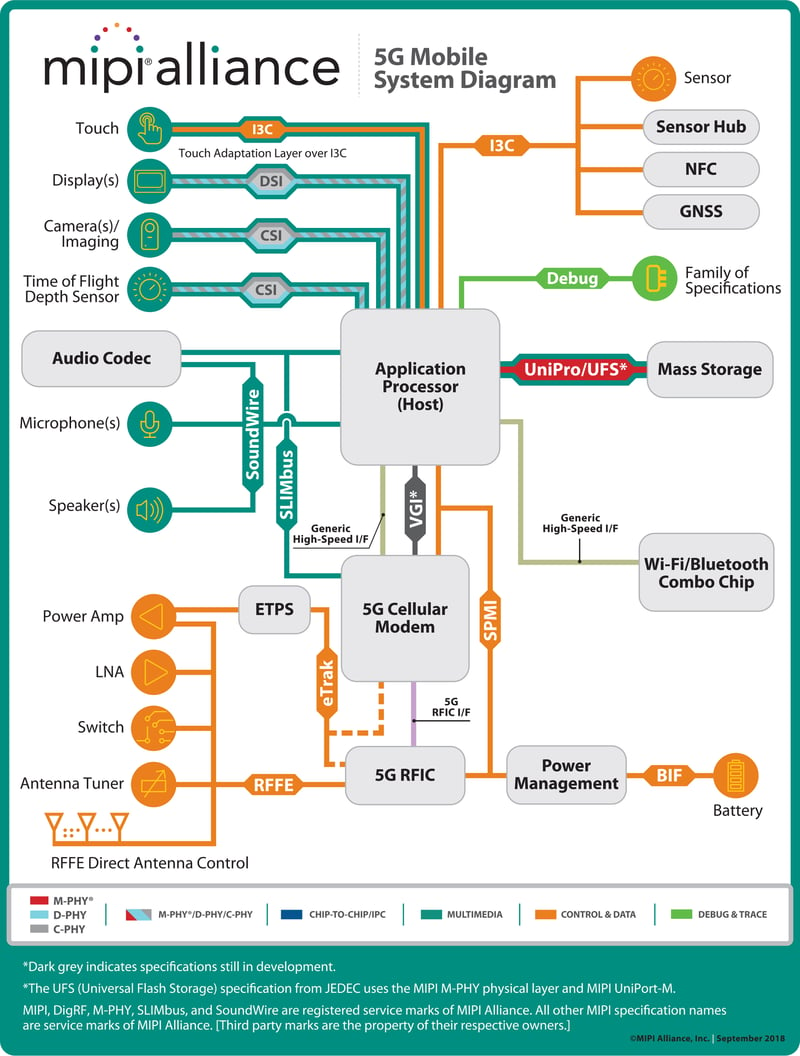1 min read
How MIPI Alliance is Enabling the 5G Future—Today
![]() Kenneth Ma, Chair of the MIPI Technical Steering Group
:
6 November 2018
Kenneth Ma, Chair of the MIPI Technical Steering Group
:
6 November 2018

- News & Events
- News
- Blog
Every new generation of cellular technology is a major opportunity for device vendors and their suppliers to grow their mind share and market share by being first to market. 5G is no exception, and companies using MIPI interface specifications have a big head start.That’s because all relevant MIPI specifications already meet 5G system requirements through 2021 and beyond for a wide variety of 5G devices, starting with smartphones. In fact, in summer 2018, several major manufacturers began using MIPI specifications for their initial 5G devices, such as the ubiquitous MIPI CSI-2, MIPI DSI-2, and MIPI RFFE specification to connect RF front-end devices to 5G modems.
5G white paper now available
A new white paper— “Making the 5G Vision a Reality: A 5G Readiness Assessment of MIPI Specifications”—details how key specifications meets industry bandwidth, performance and feature requirements for 5G. One example is MIPI CSI-2, found in virtually all 4G smartphones. Many 5G devices will have two-sensor with Tele+Wide, Color+Mono, Main+Depth sensors, or the aforementioned two-sensor + Eye / Face detection / ToF sensor in three-camera configurations. All of these implementations can be supported today by MIPI CSI-2 coupled with MIPI D-PHY or C-PHY physical layers. That means vendors using those MIPI specifications can deliver market-differentiating features today rather than tomorrow.
Why MIPI for 5G?
Familiarity is another reason why so many vendors are already using MIPI specifications for their 5G products. Virtually all 4G smartphones — along with many tablets and connected cars — use at least one MIPI interfaces. As a result, systems designers, application developers and others have extensive experience with MIPI specifications, making it a natural choice for their 5G products. That familiarity is another example of the time-to-market advantage that comes with using MIPI specifications.
MIPI specifications also are ideal for ensuring performance and reliability with 5G, which is challenging because it uses far more spectrum bands than 3G and 4G. MIPI specifications are designed to meet stringent electromagnetic interference (EMI) requirements, even in wearables and other small 5G devices where less space between components means greater risk of EMI.
Continuing development
Even so, MIPI Alliance isn’t resting on its laurels. Instead, multiple working groups are developing new specification versions to ensure that the interfaces continue to anticipate and meet future marketplace requirements. One example is the MIPI RFFE Working Group, which is developing new RF front-end capabilities such as higher data rates, more transmitter/receiver paths and more flexible programmability.

If you’d like to help influence specification requirements to support future 5G use cases, become involved in MIPI working groups.






